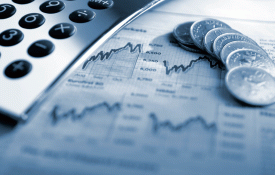Smashing the COVID Curve
In late March 2020, various state and local governments began implementing aggressive quarantine measures (such as California Gov. Newsom’s March 19 shelter-in-place order) to “flatten the curve” of anticipated COVID-19-related hospitalizations. The predictions were dire. In the case of California, Gov. Newsom predicted that well over half of the state’s population—25.5M people—could become infected with the coronavirus within two months, requiring hospitalization of approximately 700,000 people. Even with the aggressive shelter-in-place restrictions, the state’s secretary of health and human services, Mark Ghaly, MD, MPH, expected approximately 66,000 people to be hospitalized in that time period. With a statewide total of only 78,000 hospital beds, most of which were already in use, this anticipated surge in patients was no doubt sobering. Expecting a severe shortage of beds and supplies, Gov. Newsom quickly ordered $42M in emergency spending for ventilators, masks, and other supplies, as well as the leasing of additional space (including the Los Angeles Convention Center, which was converted into a field hospital for COVID-19 patients). The U.S. Navy also quickly sent the Mercy, a hospital ship with a crew of 800, including doctors, nurses, and skilled technicians, to L.A.’s San Pedro harbor.
Read more of Sander C. Zagzebski’s thought leadership.
Thankfully, the worst-case-scenario predictions failed to materialize. With the exception of a few localized hot spots, most of the country didn’t experience widespread shortages of hospital beds or ventilators. In the case of California, COVID-19 hospitalizations never topped 3,500 for the first two months of the quarantine order. Neither the Mercy nor the convention center was ever put into serious use. Hospitalizations started to climb in June as restrictions started to ease, peaking statewide on July 21, 2020, with 7,170 cases, of which 2,058 were intensive-care patients. Since then, hospitalizations have significantly decreased. On October 1, 2020, California had only 2,330 hospitalized patents, just 679 of whom were in intensive care, which begs the question of when and how the world’s fifth-largest economy will lift its economically crippling restrictions.
California’s unemployment rate, which was 3.9% at the end of February, skyrocketed to 16.4% at the end of April and into May. It dropped to 14.9% at the end of June, 13.5% at the end of July, and 11.4% at the end of August, but it remains unclear whether and to what extent those numbers have been kept artificially low by government programs like the Paycheck Protection Program (PPP) that encourage continued employment. PPP loans can be forgiven as long as the funds were used to keep employees employed and paid at their current salary, so it is likely that a number of employers temporarily resisted layoffs or salary reductions in order to take advantage of the PPP program. Disney recently announced that it was laying off 28,000 workers, which adds to large layoffs from airlines and retailers. Absent significant additional federal stimulus, a significant drop in the unemployment rate seems unlikely as long as quarantine measures remain in place.
“The upcoming election is unlikely to have a negative impact, and could indeed have a very positive impact, on the industry.”
Cannabis Is Essential and Is Quietly Breaking New Records
One of the few economic bright spots during the coronavirus lockdown has been the cannabis industry. Quickly deemed essential by almost every state jurisdiction in which it is legal, cannabis sales remained strong and have even increased during quarantine. Days of sheltering in place must go by faster if one has a stash of good weed handy! Prior to Gov. Newsom’s shelter-in-place order, adult-use cannabis sales in California had remained pretty steady at around $300M per month. As consumers started to hoard toilet paper and hand sanitizer, some also dropped by the dispensary to drive March sales up to approximately $325M. The number dipped slightly in April but has since grown steadily, with July sales a record of almost $350M. An essential business, indeed!
The legal landscape also appears to be improving for the cannabis industry. In September 2019, the U.S. House of Representatives passed the Secure and Fair Enforcement (SAFE) Banking Act of 2019. While the SAFE Banking Act stalled in the Senate and never became law, its operative provisions were included in the Health and Economic Recovery Omnibus Emergency Solutions (HEROES) Act, the Democrats’ primary proposed coronavirus relief package. Speaker Nancy Pelosi’s willingness to include cannabis legislation in general, and in the SAFE Banking Act in particular, as part of her negotiations with the Republican Senate and the White House significantly increases the chances of positive federal legislation affecting the cannabis industry.
In addition, several commentators have referred to the upcoming election as a win-win for the legal cannabis industry. If Democrats gain control of the Senate and also win the presidency, the legalization effort will have found itself some truly powerful friends. That said, the Trump Administration has generally been friendly to the cannabis industry, at least insofar as it has allowed guidelines and enforcement priorities prepared by the prior administration to remain the status quo. With a few notable exceptions, the cannabis industry has been allowed to develop organically without significant new federal roadblocks. The upcoming election is unlikely to have a negative impact, and could indeed have a very positive impact, on the industry.
COVID Fears Drive Crypto Strength
On March 16, Bitcoin (BTC) was trading at under $5,000. After governments implemented shelter-in-place orders and, more significantly, responded to the anticipated economic fallout with fiscal and monetary stimulus, BTC rapidly traded up to nearly $12,400 on August 17. Similarly, Ether (ETH) was trading on March 16 at $107.90 and subsequently traded up as high as $441.88 on September 2. By way of comparison, gold also traded up significantly during the quarantine period, with a March 16 price of $1,487.70 increasing to as high as $2,067.15 on August 5. In a sense, mature crypto coins like BTC and ETH have traded in a similar (albeit more amplified) manner to inflation hedges like gold.
The future for digital assets, however, remains murky, as the Securities and Exchange Commission (SEC) continues to take a rather aggressive stance. In June, Telegram settled its combative case with the SEC by agreeing to disgorge the proceeds of its $1.2B initial coin offering (ICO) for the Telegram Open Network, effectively scuttling its crypto ambitions at least for the time being. The SEC has targeted the promoters of a number of token offerings for violating federal securities laws and has targeted a number of high-profile endorsers, including Steven Seagal, Floyd Mayweather Jr., and DJ Khaled, in connection with ICO violations.
Learn more about Greenspoon Marder LLP’s approach to corporate law.
The crypto world has found an unlikely friend, however, in SEC Commissioner Hester Peirce. Peirce, one of five SEC commissioners, including SEC Chairman Jay Clayton, has spoken out against several of the SEC’s recent enforcement actions and has proposed new rulemaking in the form of a safe-harbor provision to allow token issues the freedom to issue digital coins without fear of an immediate SEC-enforcement action. While she has yet to persuade the other commissioners, her determination has been encouraging to the industry. If COVID stimulus continues to elevate token prices, we may be hearing more from Peirce and the crypto cowboys.
This article is for information purposes only and should not be construed as legal advice, investment advice, or tax advice.














































